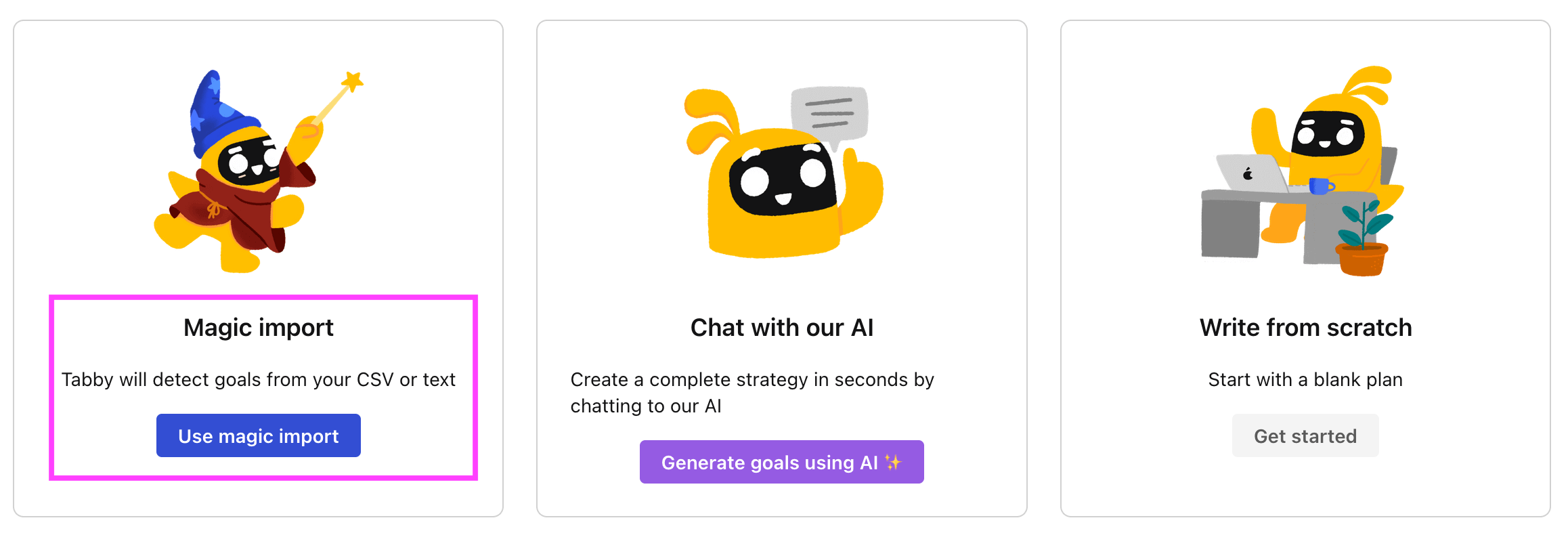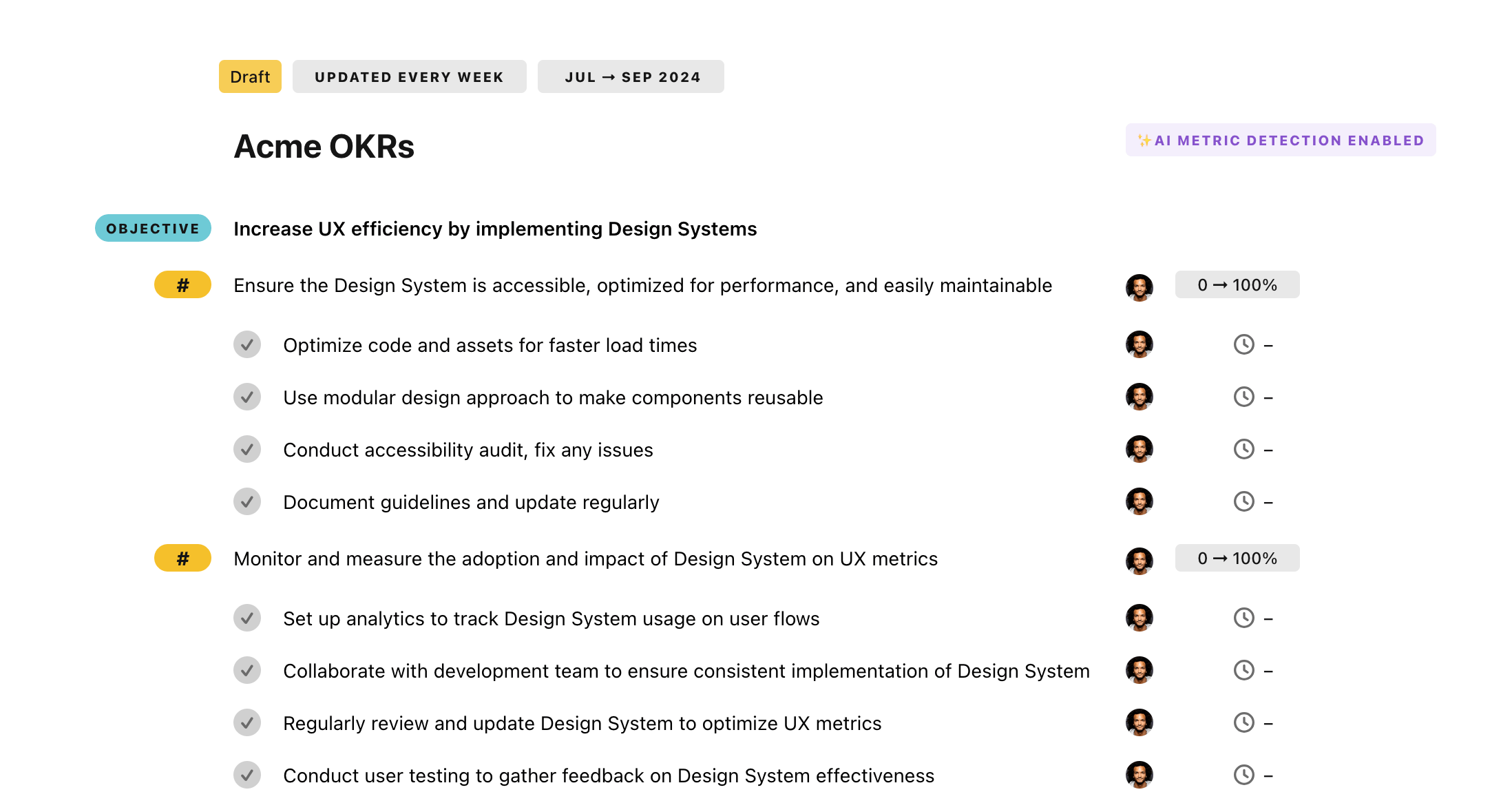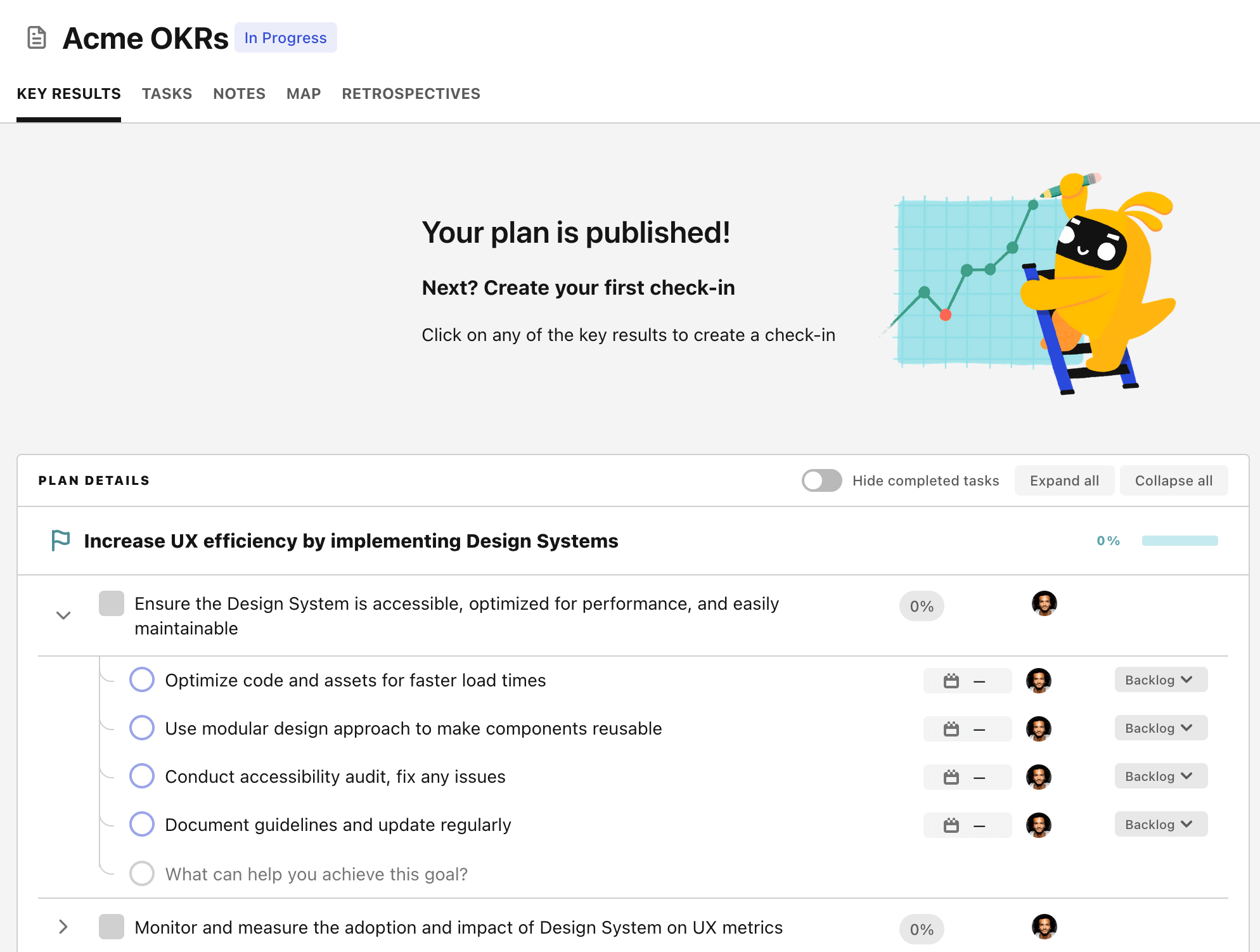OKR template to enhance leadership skills and team productivity
Your OKR template
The second goal within this OKR focuses on improving the KPI achievement rate by 15%. To achieve this, performance monitoring systems, regular trainings, and clear performance objectives for every team member are proposed.
Another target under this OKR is to host interdisciplinary skill-sharing sessions biweekly. Specific strategies for this include finding suitable topics and speakers, developing, and sending invitations, as well as arranging for a location and times.
This OKR is structured with the purpose of facilitating a better working environment where all team members feel valued and are more productive. This over time could lead to a reduced employee turnover rate, increased KPI achievement, and better leadership skills.
ObjectiveEnhance leadership skills and team productivity
KRLower employee turnover rate by 10%
Implement effective employee onboarding and training procedures
Initiate regular employee engagement and satisfaction assessments
Enhance benefits package and competitive compensation
KRIncrease team KPI achievement rate by 15%
Implement performance monitoring and feedback systems
Provide regular training and development programs
Define clear, measurable, achievable performance objectives for each team member
KRHost biweekly interdisciplinary skill-sharing sessions
Identify potential topics and speakers for the sessions
Develop and send out invitations for sessions
Schedule biweekly meeting times and secure a location
How to edit and track OKRs with Tability
You'll probably want to edit the examples in this post, and Tability is the perfect tool for it.
Tability is an AI-powered platform that helps teams set better goals, monitor execution, and get help to achieve their objectives faster.
With Tability you can:
- Use AI to draft a complete set of OKRs in seconds
- Connect your OKRs and team goals to your project
- Automate reporting with integrations and built-in dashboard
Instead of having to copy the content of the OKR examples in a doc or spreadsheet, you can use Tability’s magic importer to start using any of the examples in this page.
The import process can be done in seconds, allowing you to edit OKRs directly in a platform that knows how to manage and track goals.
Step 1. Sign up for a free Tability account
Go tohttps://tability.app/signup and create your account (it's free!)
Step 2. Create a plan
Follow the steps after your onboarding to create your first plan, you should get to a page that looks like the picture below.

Step 3. Use the magic importer
Click on Use magic import to open up the Magic Import modal.
Now, go back to the OKR examples, and click on Copy on the example that you’d like to use.

Paste the content in the text import section. Don’t worry about the formatting, Tability’s AI will be able to parse it!

Now, just click on Import from text and let the magic happen.

Once your example is in the plan editor, you will be able to:
- Edit the objectives, key results, and tasks
- Click on the target 0 → 100% to set better target
- Use the tips and the AI to refine your goals
Step 4. Publish your plan
Once you’re done editing, you can publish your plan to switch to the goal-tracking mode.

From there you will have access to all the features that will help you and your team save hours with OKR reporting.
- 10+ built-in dashboards to visualise progress on your goals
- Weekly reminders, data connectors, and smart notifications
- 9 views to map OKRs to strategic projects
- Strategy map to align teams at scale